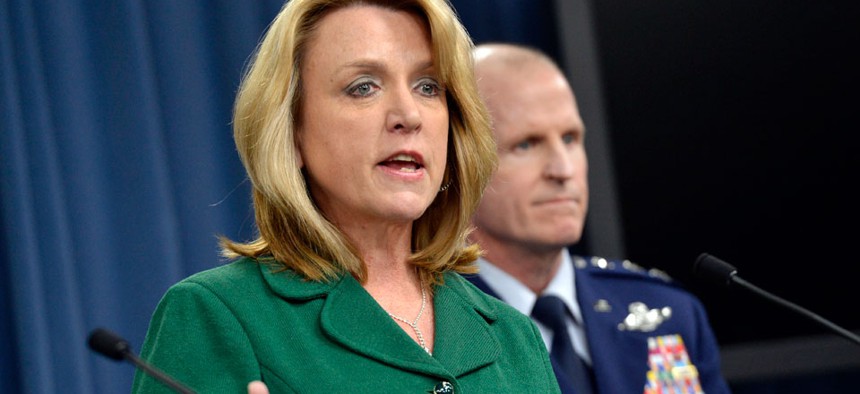Air Force Debuts New Plan to Beat Tech Curve -- ‘Strategic Agility’

Air Force Secretary Deborah Lee James Department of Defense
Service needs to adapt quickly to technological change, Air Force Secretary Deborah Lee James says.
The Air Force has proven to have a pretty poor record of predicting the future, so it has decided to adopt the concept of “strategic agility” as its operating philosophy over the next 30 years.
Air Force Secretary Deborah Lee James told reporters during a Pentagon press briefing yesterday, the new strategy would help the service better deal with changes in technology and the geopolitical landscape.
Strategic agility “should allow us to rapidly adjust to evolving threat environments faster than our potential adversaries,” James said.
This means the opportunity to modify or abandon pieces or technologies within programs as needed and the ability to harness rapid prototyping to bring a design idea into service more quickly, she added.
The new 30-year strategy the Air Force introduced yesterday emphasizes that dramatic changes in technology have empowered a wide range of adversaries, including ad hoc groups.
“The portability of information-sharing technology has enabled disaggregated communities to self-organize and threaten unstable governments,” the document stated.
The 22-page strategy paper added, “As the future unfolds, an increased awareness of the opportunities and threats created by disruptive technological change is vital, particularly the implications these changes have for geopolitical balance.”
Swift technological change will become the “new norm,” and the Air Force must have the ability to quickly adapt, the strategy paper said, including space and cyberspace operations, per the strategy.
The Air Force also needs to adopt a multidomain role in future operations, in which cyber and space support conventional air missions, rather than each working in isolation, the strategy paper advocated.
The service should also make the switch “from large, complex programs rife with crippling interdependencies to programs with simple, severable components, open architectures and more distributed participation,” the report stated.
The service plans to cut back on contractor support and, in the future, the Air Force will act as its own integrator and synchronizer, James said during the press conference.
The strategy paper also identifies key technologies that “could be game changers,” she said.
“We don't know yet, but they could be -- things like hypersonics, directed energy, to name just a few,” she said.
The new strategy recommends looking into nanotechnology, advanced unmanned systems and autonomous systems.
But the strategy paper concluded:
“This list is by no means exhaustive. In fact, it’s just the beginning! The future will generate new combinations of technologies we cannot describe, or possibly even imagine, which will shape the way our service provides airpower.”






